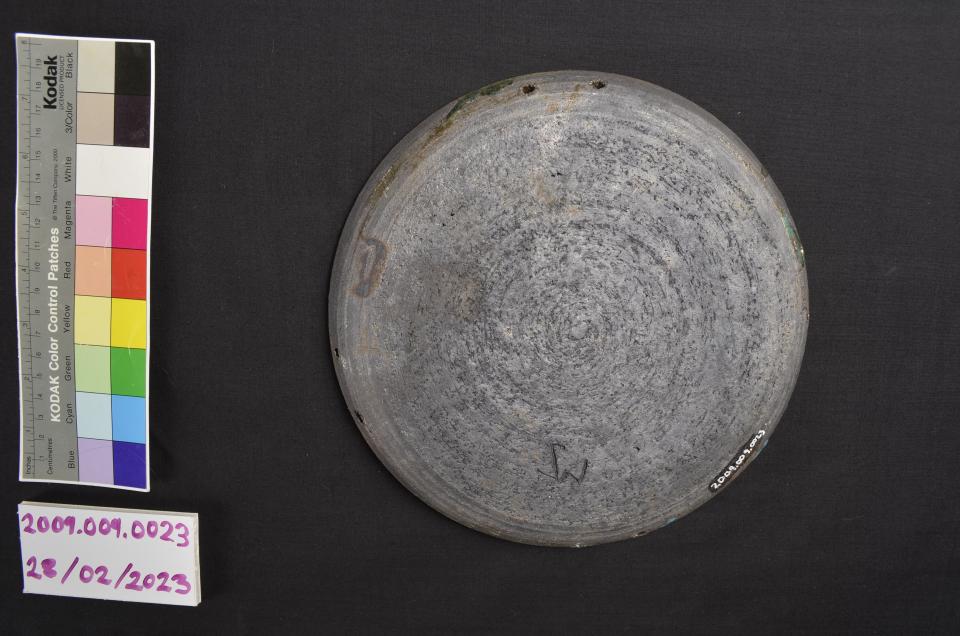
Diameter: 21.6 cm Height: 2.5cm
Glazed ceramic raku plate, made in the western style. Circular plate with a raised edge, the plate has four pairs of holes evenly spaced around the edge of the plate. Most of the surface of the plate is glazed which is blue/green in colour and raised in several areas. The back of the plate is not glazed and is dark grey in colour. The initials "MS" or "JW" have been carved into the back.
In 1973 the City of Kingston celebrated the tercentenary of its founding as a fur trading post in 1673. To mark the anniversary, the Kingston Potters' Guild, then known as the Ceramicists Guild of Kingston, gave the City 33 glazed plates handmade by local potters . These plates are examples of a Japanese firing technique known as "Raku" which refers to joy, harmony, peace, and contentment. With the Raku method each piece is handled individually and must undergo a dual thermal shock. The item is first placed in a hot kiln and stays until the glaze is melted and shiny at 1000 degrees Celsius. The glowing piece is pulled from the kiln and carefully embedded in combustible materials such as straw and sawdust. The combustible packing materials leave marks in the soft, hot glaze and affect the object's colouring. After 30 to 45 minutes, the piece is taken out and cleaned to reveal its colourful surface. Raku pottery is more porous and fragile than stoneware and no two pieces are alike.
